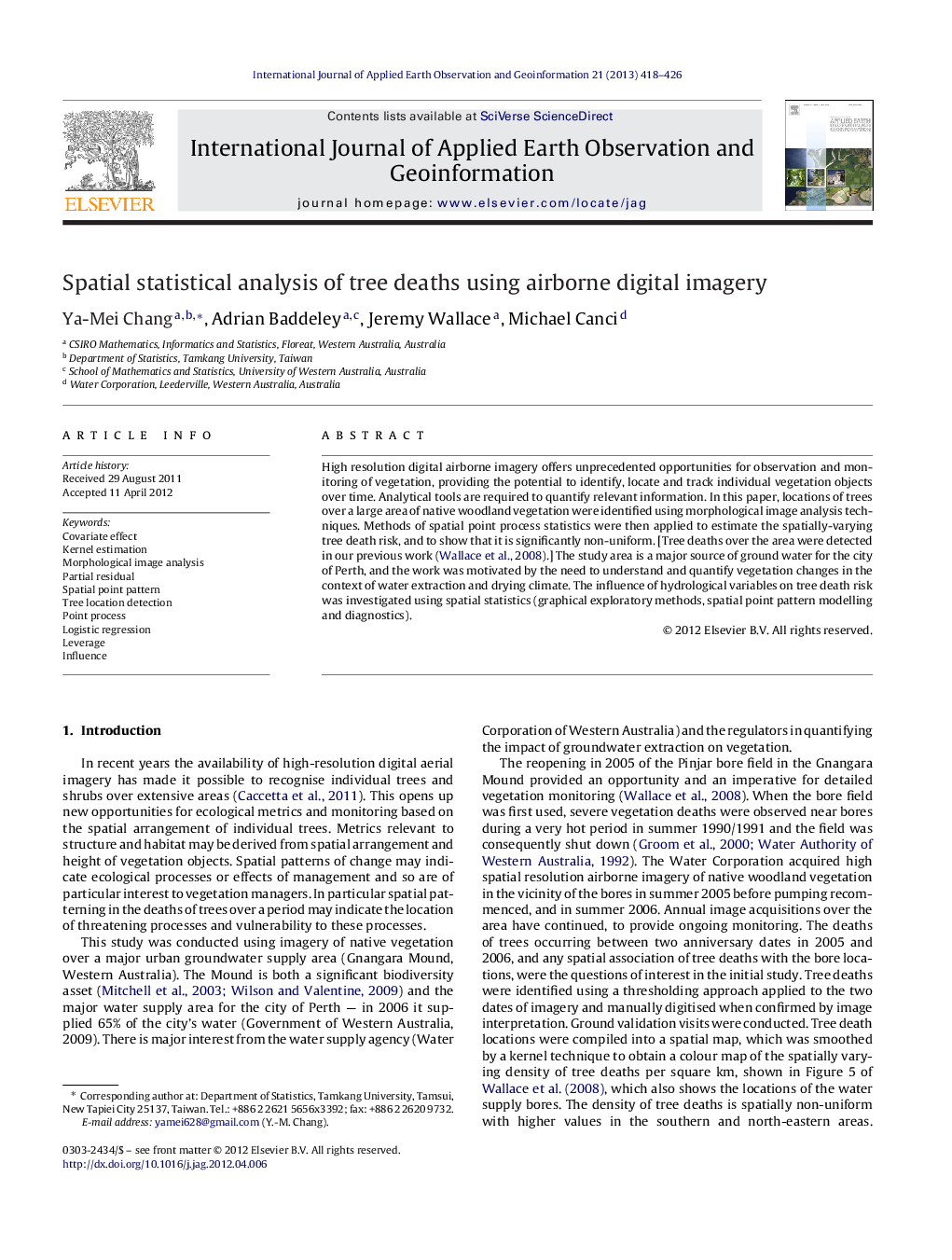| Article ID | Journal | Published Year | Pages | File Type |
|---|---|---|---|---|
| 4464872 | International Journal of Applied Earth Observation and Geoinformation | 2013 | 9 Pages |
High resolution digital airborne imagery offers unprecedented opportunities for observation and monitoring of vegetation, providing the potential to identify, locate and track individual vegetation objects over time. Analytical tools are required to quantify relevant information. In this paper, locations of trees over a large area of native woodland vegetation were identified using morphological image analysis techniques. Methods of spatial point process statistics were then applied to estimate the spatially-varying tree death risk, and to show that it is significantly non-uniform. [Tree deaths over the area were detected in our previous work (Wallace et al., 2008).] The study area is a major source of ground water for the city of Perth, and the work was motivated by the need to understand and quantify vegetation changes in the context of water extraction and drying climate. The influence of hydrological variables on tree death risk was investigated using spatial statistics (graphical exploratory methods, spatial point pattern modelling and diagnostics).
► Living tree locations are detected on airborne digital imagery using morphological methods. ► The kernel soothed estimate of the tree death risk shows strong spatial non-uniformity. ► Areas of significantly high tree death risks are identified. ► Parametric modelling is used to investigate the dependence between the tree death risk and hydro-geological covariates. ► Model validity is assessed using recently-developed diagnostic tools.
